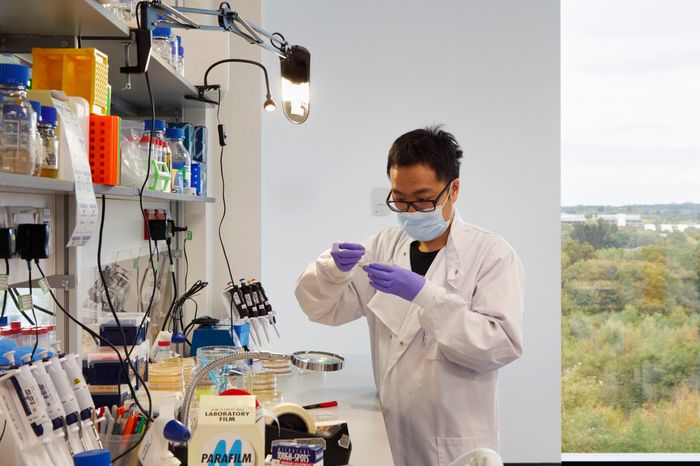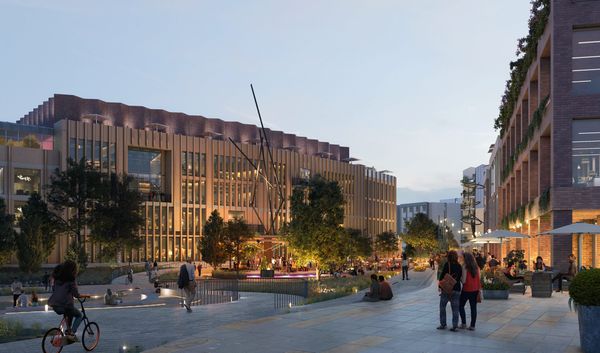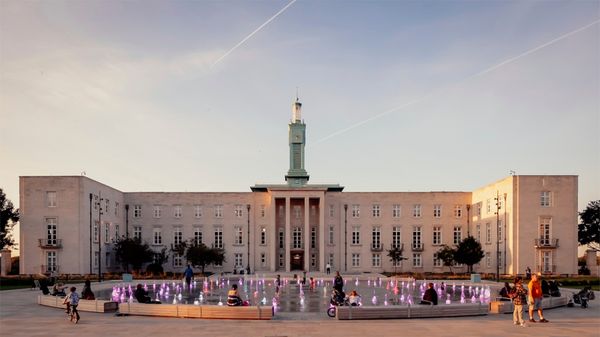Thinking beyond the station: the art of delivering transport nodes with Modern Methods of Construction
A second in the series Thinking Beyond the Station, we look at how thinking creatively around offsite construction brings more benefits than just efficiency.
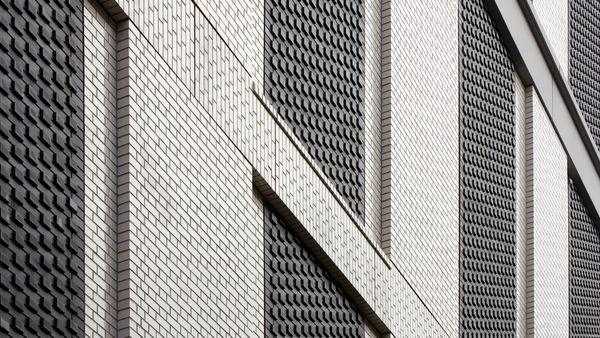
In the first instalment of Thinking Beyond the Station, we explored oversite development; in particular, how we achieved acoustic separation between the bustling Tottenham Court Road station and the residential development to make sure we’re creating homes and not just units.
For this article, we will look at how Modern Methods of Construction (MMC), which is implemented through design for manufacture and assembly (DfMA), saved both time and cost in delivering major upgrades in key infrastructure nodes in London: Tottenham Court Road and Liverpool Street stations. DfMA was utilised to deliver a variety of structures – from prefabricated brick skins for the Tottenham Court Road oversite development facades, to platforms at Liverpool Street stations. Both stations are clad internally with glass fibre reinforced concrete (GFRC) panels which were designed in standard modules, manufactured in specialist factories, transported to site and installed within the platform environment.
30%
Savings in programming for delivering the smoke and ventilation shaft at Tottenham Court Road station.
In the first instalment of Thinking Beyond the Station, we explored oversite development; in particular, how we achieved acoustic separation between the bustling Tottenham Court Road station and the residential development to make sure we’re creating homes and not just units.
For this article, we will look at how Modern Methods of Construction (MMC), which is implemented through design for manufacture and assembly (DfMA), saved both time and cost in delivering major upgrades in key infrastructure nodes in London: Tottenham Court Road and Liverpool Street stations. DfMA was utilised to deliver a variety of structures – from prefabricated brick skins for the Tottenham Court Road oversite development facades, to platforms at Liverpool Street stations. Both stations are clad internally with glass fibre reinforced concrete (GFRC) panels which were designed in standard modules, manufactured in specialist factories, transported to site and installed within the platform environment.
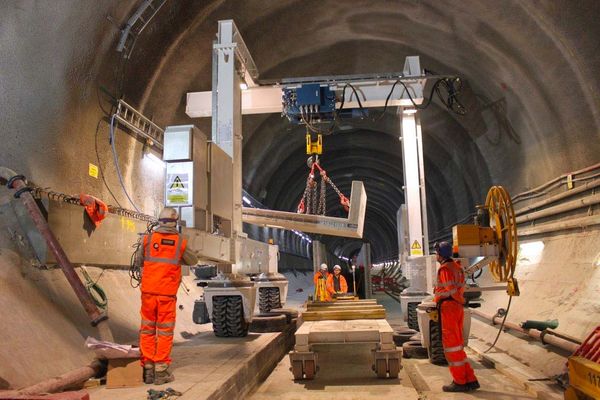
A comparison of platform installation: prefabricated construction at Liverpool Street VS in-situ construction at Tottenham Court Road.
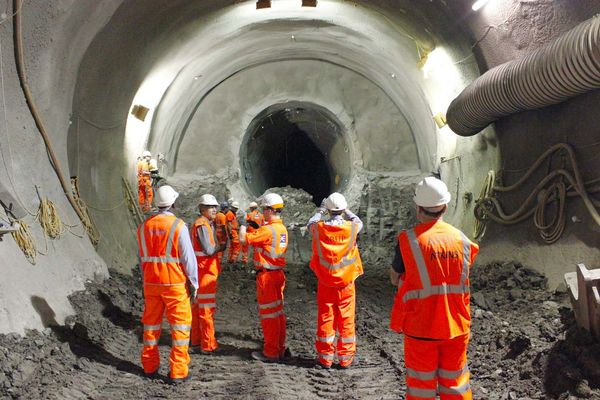
Tottenham Court Road station
We have been involved in Tottenham Court Road station’s multitude of developments for over 20 years, including the latest addition of a Crossrail station, soon to be known as the Elizabeth line. Once complete, it anticipates a footfall of 200,000 people per day. Having designed the station, we worked with Laing O’Rourke on the delivery, coordinating over 200m of platforms and ticket halls using a mix of MMC and BIM Level 2.
DfMA also supported the delivery of the station’s residential development above to cause as little disruption as possible to both the station and adjacent streets. The oversite development above the new Western Ticket Hall at Tottenham Court Road Station provides retail space and 92 high-end residential units across two characteristically distinct blocks. Block C is larger in scale and the materiality reflects ‘retail-centric’ Oxford Street onto which it fronts, whilst Block D responds to the Soho aesthetic, with traditional brick and concrete cladding split into three distinctive blocks to reflect the historic Georgian townhouse typology synonymous with the Soho context.
Offsite fabrication of multiple components meant consistent quality of output, ensuring design aspirations are met by enabling the design team to flag issues before fabrication and construction on site. This strategy meant ‘just-in-time’ deliveries, and hence an improvement in contractor’s programme and logistics. A key example of this is the prefabricated brick-clad panels that make up the station smoke and vent shafts which are incorporated into the residential development. Implementing offsite construction allowed us to have better control of the quality of the finished brickwork while reducing the project risks by eliminating the need for working at height.

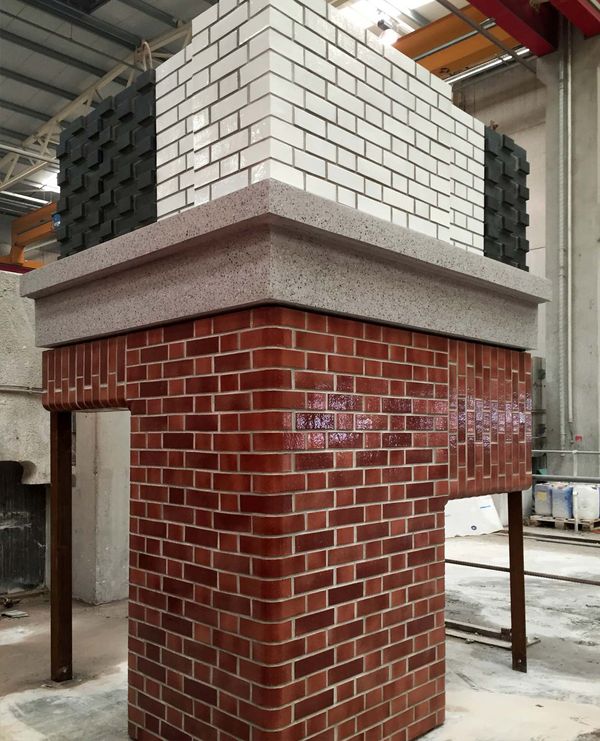
The use of 1:1 prototyping has allowed us to engage with the client throughout both the design and construction stages, gaining the necessary assurance and compliance approvals required when designing and delivering a major infrastructure project in the centre of London.
13,100
GFRC cladding panels used at Liverpool Street station. Consisting of 1,240 types, it's the largest station with the most GFRC panels.
Liverpool Street station
Further east from Tottenham Court Road station, we are working with both Arup and Laing O’Rourke to deliver the new Crossrail Liverpool Street station and public realm. The £500m design, originally developed by WilkinsonEyre with Mott Macdonald, will provide new entrances and ticket halls at both Liverpool Street and Moorgate London Underground stations.
One of the challenges we faced was to keep both stations operational whilst the works are carried out. This has been addressed by utilising prefabricated concrete building components – which included 200 pieces of pre-fabricated platform components that were transported from a state-of-the-art factory. Upon its arrival onsite, the sections were lowered in through a temporary shaft in Finsbury Circus. This shaft was constructed in the previous lawn bowls green and descended all the way to platform level, some 30+ metres below street level, to be met by specialist cranes which moved the sections to the correct place.
This method meant a much smaller number of workers were required on site to install the platforms, with minimal formwork, wet concrete and complex site work that would have typically been required for in-situ construction. There was a significant programme saving in prefab construction also, of approximately 25% when compared to traditional methods.
13,100
GFRC cladding panels used at Liverpool Street station. Consisting of 1,240 types, it’s the largest station with the most GFRC panels.

In motion: how the platform at Liverpool Street station came together.
The art of efficient delivery
We are eager champions of DfMA, not just because it brings cost and time efficiencies to your project, but also because it produces less waste; it improves quality of output; it creates a safer environment for construction workers; and through standardisation of components it allows designers to concentrate on what they do best – producing beautiful design.
With a wider goal in mind to bridge the gap between design and manufacturing, we have an in-house specialist team that supports projects from design stage to delivery. Our ability to think creatively as well as apply our experience and expertise in technical design allows us to develop the design with the client through all project stages, solving problems and finding solutions to complex component and material interfaces.
Our approach is not to evangelise one system but to recognise the range of options and identify what is appropriate for the particular site, the project brief and the building type and to optimise ‘pre-manufactured value’ (the percentage of a building that is pre-manufactured and assembled on site rather than being constructed traditionally) to the extent that it improves one or more of cost certainty, programme certainty, quality and sustainability.
